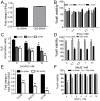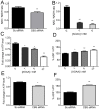Cystathionine beta-synthase (CBS) contributes to advanced ovarian cancer progression and drug resistance
- PMID: 24236104
- PMCID: PMC3827285
- DOI: 10.1371/journal.pone.0079167
Cystathionine beta-synthase (CBS) contributes to advanced ovarian cancer progression and drug resistance
Abstract
Background: Epithelial ovarian cancer is the leading cause of gynecologic cancer deaths. Most patients respond initially to platinum-based chemotherapy after surgical debulking, however relapse is very common and ultimately platinum resistance emerges. Understanding the mechanism of tumor growth, metastasis and drug resistant relapse will profoundly impact the therapeutic management of ovarian cancer.
Methods/principal findings: Using patient tissue microarray (TMA), in vitro and in vivo studies we report a role of of cystathionine-beta-synthase (CBS), a sulfur metabolism enzyme in ovarian carcinoma. We report here that the expression of cystathionine-beta-synthase (CBS), a sulfur metabolism enzyme, is common in primary serous ovarian carcinoma. The in vitro effects of CBS silencing can be reversed by exogenous supplementation with the GSH and H2S producing chemical Na2S. Silencing CBS in a cisplatin resistant orthotopic model in vivo by nanoliposomal delivery of CBS siRNA inhibits tumor growth, reduces nodule formation and sensitizes ovarian cancer cells to cisplatin. The effects were further corroborated by immunohistochemistry that demonstrates a reduction of H&E, Ki-67 and CD31 positive cells in si-RNA treated as compared to scrambled-RNA treated animals. Furthermore, CBS also regulates bioenergetics of ovarian cancer cells by regulating mitochondrial ROS production, oxygen consumption and ATP generation. This study reports an important role of CBS in promoting ovarian tumor growth and maintaining drug resistant phenotype by controlling cellular redox behavior and regulating mitochondrial bioenergetics.
Conclusion: The present investigation highlights CBS as a potential therapeutic target in relapsed and platinum resistant ovarian cancer.
Conflict of interest statement
Figures






References
-
- Szabo C (2007) Hydrogen sulphide and its therapeutic potential. Nat Rev Drug Discov 6(11): 917–35. - PubMed
-
- Paul BD, Snyder SH (2012) H(2)S signalling through protein sulfhydration and beyond. Nat Rev Mol Cell Biol 13(8): 499–507. - PubMed
-
- Martelli A, Testai L, Marino A, Breschi MC, Da Settimo F, et al. (2012) Hydrogen sulphide: biopharmacological roles in the cardiovascular system and pharmaceutical perspectives. Curr Med Chem 19(20): 3325–36. - PubMed
-
- Xiao L, Lan A, Mo L, Xu W, Jiang N, et al. (2012) Hydrogen sulfide protects PC12 cells against reactive oxygen species and extracellular signal-regulated kinase 1/2-mediated downregulation of glutamate transporter-1 expression induced by chemical hypoxia. Int J Mol Med 30(5): 1126–32. - PubMed
Publication types
MeSH terms
Substances
Grants and funding
LinkOut - more resources
Full Text Sources
Other Literature Sources
Medical

